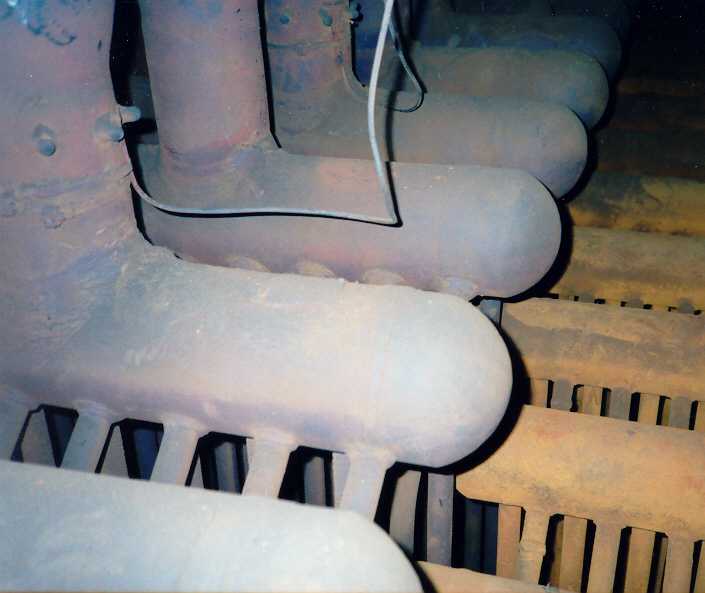
Plant:
- 4 x 350 and 4 x 650 MW coal-fired units in the far east
Objective:
- To develop, install and commission an on-line life monitoring system using thermocouples and steam pressure and temperature sensors only
Scope:
- Superheater and reheater headers, manifolds and tubes on two boiler designs
- Fatigue, creep and creep-fatigue damage for headers and manifolds
- Creep, fireside and steamside corrosion mechanisms for boiler tubes
Approach:
- Review design, operating conditions, materials and prioritise boiler components for on-line monitoring
- Provide instrumentation plan for sensors
- Install sensors and monitor operation for several months, covering various start-ups, shut-downs, mill changes etc
- Develop finite element models of all components
- Model actual operation from monitoring and ‘map’ temperatures from thermocouples to the finite element analysis
- Develop ‘stress functions’ which correlate temperatures from monitoring to the stresses at the critical locations on each component. This method utilises both temperature and temperature change to capture transient behaviour
- Develop software to capture and validate sensor data, and then for each component, calculate life consumed by creep, fatigue and creep-fatigue
- Allow validation and revision of life calculations on the basis of inspection data
Benefits:
- Boiler components prioritised in terms of severity and nature of damage
- Focussed inspection and maintenance plan developed
- Real-time stress display for all monitored components
- On-demand remaining life calculation
- Life extension options, through changes in operation, identified
- Effect of market–driven changes in operation on component life quantified
Published:
Brear, J.M., Jones, G.T., Jarvis, P. and Sanders, J, “On-line monitoring of power plant components”, ERA Conf ‘Engineering Asset Management for Utilities, Industry and Commerce’, London, 7-8 October 1997. Paper 3.7
Annis, V.A., Jeffery, C. and Brear, J.M., “On-line creep-fatigue monitoring of steam headers”, IMechE Seminar `Load Cycling, Plant Transients and Off-design Operation.’, London, April 1991
